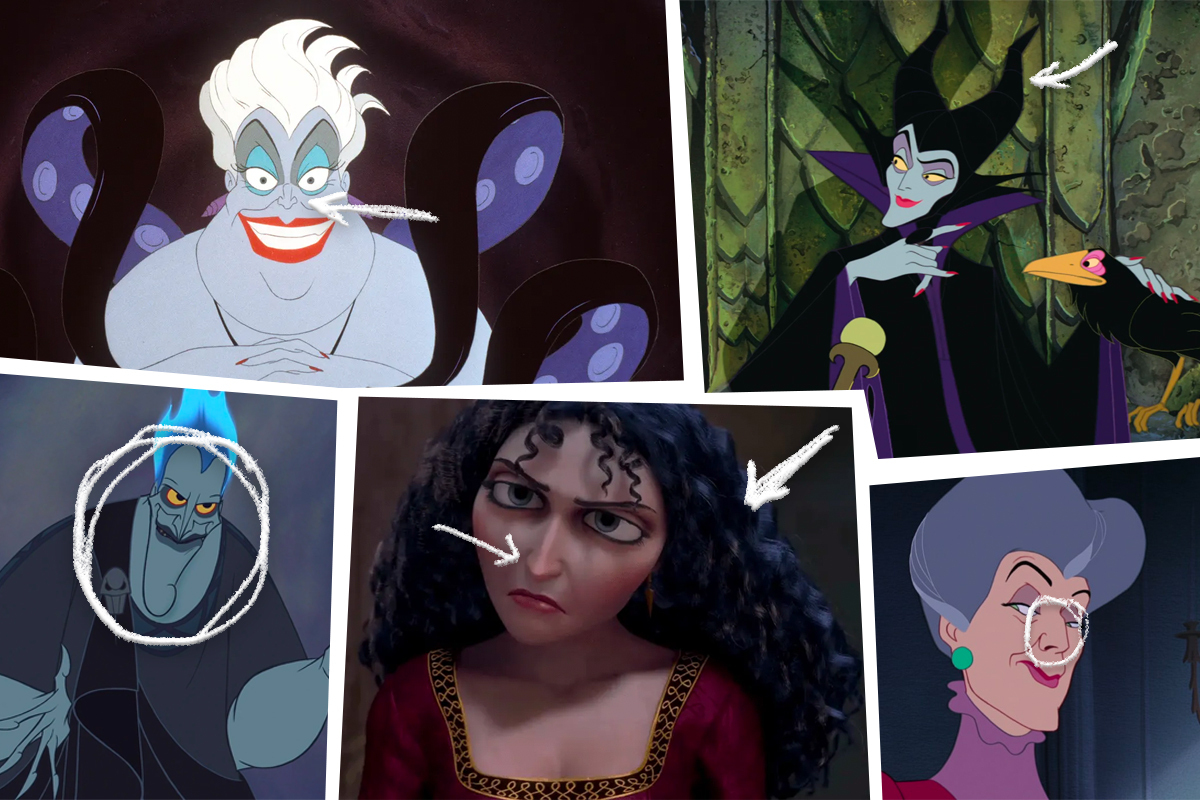Oh, Disney. As if the waifish empty-headed princesses and irredeemably racist portrayals of non-white characters were not enough. Just why does my fine Jewish ass resemble the full cadre of Disney villains?
“Tangled” got me first.
Mother Gothel is the cinematic foil for the predictably wide-eyed, button-nosed Rapunzel. Gothel, that magnificent, mercurial manipulator. So miserly with her food and money. So separate from the other golden-haired kingdom. So distinctly othered.
She so happens to be animated with the curly black hair and hooked nose stereotypical to Jews.
But beyond Gothel’s suspicious phenotype, “Tangled” follows an eerily familiar story. Blood libel, an antisemitic canard that reverberates through history, accuses Jews of stealing Christian children to bake their blood into matzah. It was particularly prevalent in the Middle Ages, when it was not uncommon for European Jews to be hunted down and murdered whenever a child went missing. Jews stealing pretty Aryan children to sustain their dark magic. Sound familiar?
Angst led me further. One rabbit hole, excellent Twitter thread and confusingly upbeat Hava-Nagila-themed rap history of Jewish stereotypes in media later, my suspicions were confirmed: Disney villains are almost ubiquitously Jew-coded.
Cinderella’s evil stepmother slays the high-brow high-nose sneer. Maleficent from “Sleeping Beauty” rocks demon horns like those twitchy demon Jews of yore. Hades from “Hercules” is a snide, familiar outsider with thick New York diction who spits Yiddish phrases with endearing punctuation. In “The Little Mermaid,” Ursula has got the sweetest little purple hooked nose you’ve ever seen.
I’m tempted to dismiss all of this as incidental. The cartoon villain is always ugly. But the lengthening list begs the question: why are the phenotypic features common to Jews and other minorities the “ugly” ones?
The historical grounding of Disney’s antisemitic tropes is neither hidden nor surprising. Since the invention of the printing press, caricatures of Jews have been broadly distributed.
Early media depicted Jews as wrinkly and fat with flabby lips, wheeling eyes, hooked noses and their signature unruly black hair.
These depictions made up the basis of Grimm’s Fairy Tales, which are rife with antisemitism. The original Grimm includes a slew of fabulous little finds, such as “The Jew in the Brambles,” where the sweet-faced protagonist tortures a Jew by forcing him to dance in thorns, and “The Good Bargain,” which involves a Jewish ne’er-do-well who (surprise!) hoards money. The Nazi party capitalized on the distinctly Jewish villains in Grimm’s fairy tales, distributing the stories as propaganda.
Disney continued this illustrious history of Jew-coding villains. But unlike Grimm, which enjoyed a steamy release in 1812, “Tangled” came out in 2010. What is the excuse for employing the same tired trope nearly 200 years later?
Disney produces media for young minds. There are real consequences to marinating youth in antisemitic imagery that trains us to unthinkingly identify any hint of darkness or Semitic origin with ugliness and evil. I, for one, grew up with a virulent burning hatred of my untamable curls, and by 6th grade I was secretly saving money for a nose job to address my barely perceptible bump.
Today my feelings are more complex. I understand mass media’s impact on culture, and with rising antisemitism, it is no joke. But Disney villains aren’t only Jew-coded. They are queer-coded too. As a queer Jew and — God forbid — a woman looking for substantive representation, pickings are slim. Don’t blame me for finding kinship where I can.
Greedy! Tricky! Sexually deviant! Fat! Snide! I will love these freaky, sneaky, slimy little villains. I will revel in their counter-cultural sedition. Disney, Jew-code your villains, so be it! But watch out for your shiny golden locks.



